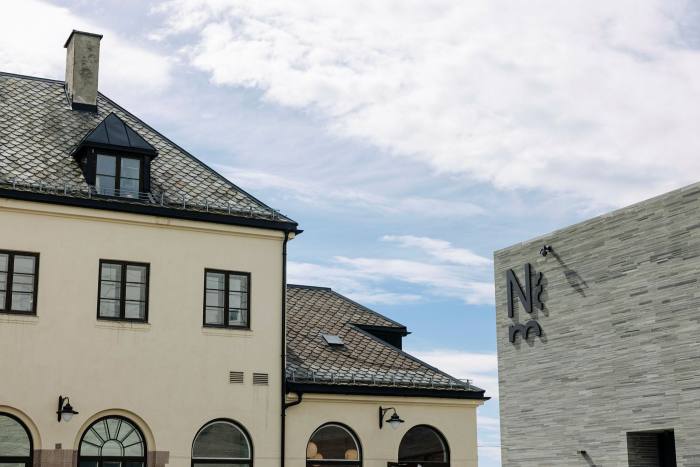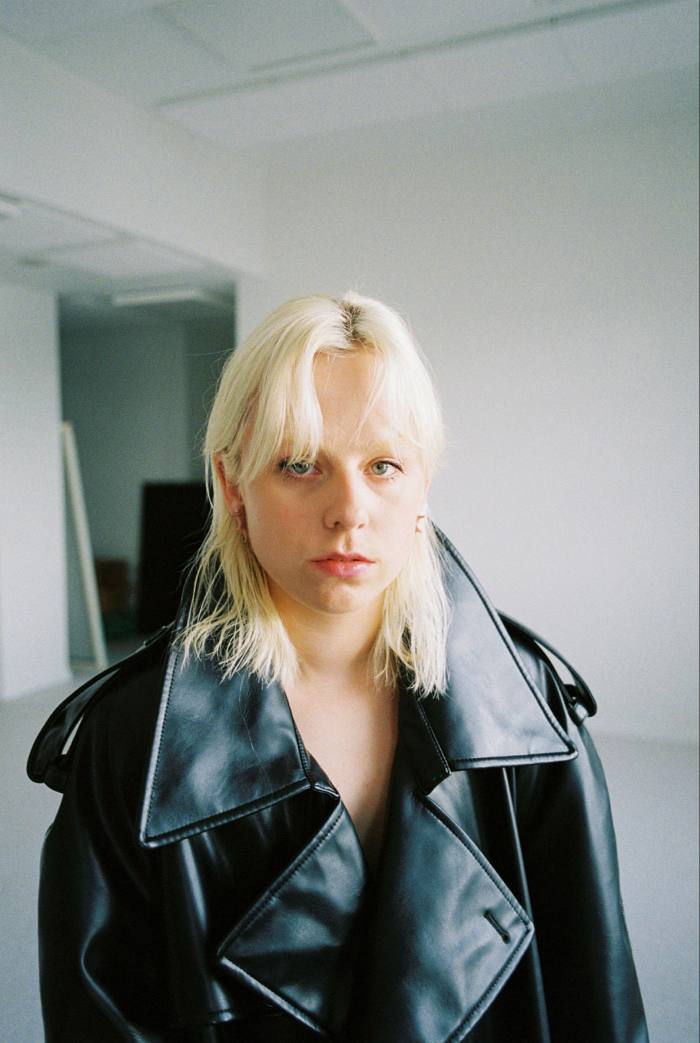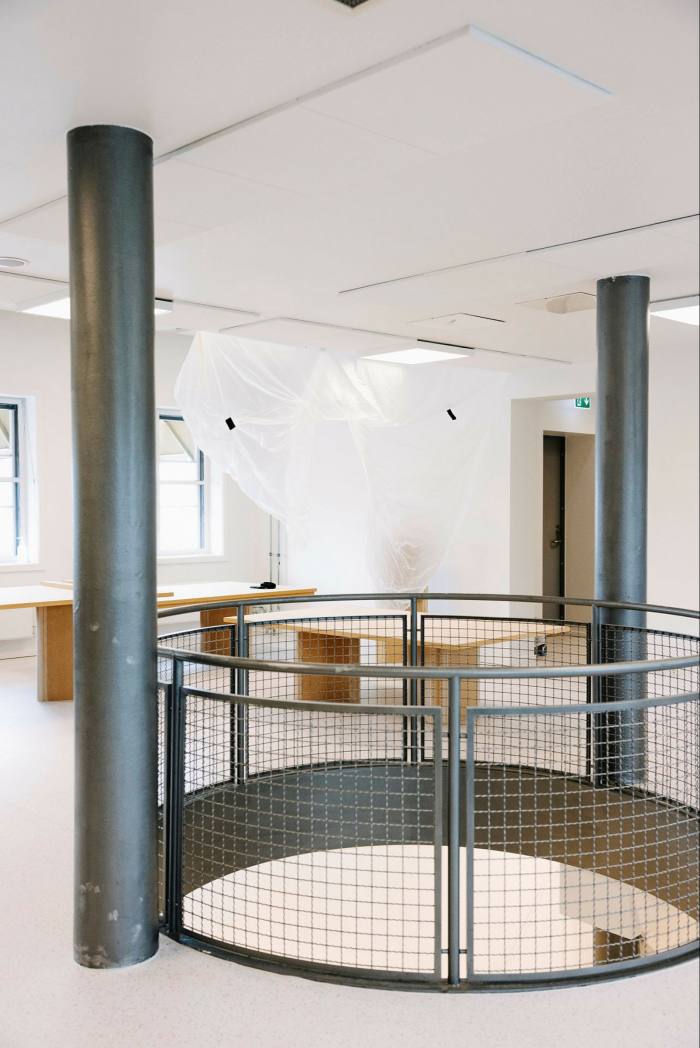At 22, Elise By Olsen has spent much of her life refusing to be ignored by what she calls the “legitimate” fashion world.
At eight, she started a style and culture blog; at 13, she became one of the world’s youngest editors-in-chief when she founded, published and edited Recens, a glossy style magazine for under-18s. (“It was unheard of that young people would take part in the cultural conversation or the fashion industry,” she says.) Later, she launched Wallet, a fashion industry journal with what WWD described as a “sharp, critical pen”.
The wunderkind from the Oslo suburbs has worked as a cultural and branding consultant and at 17 joined a creative residency at Google in Paris at the invitation of Hans Ulrich Obrist, the curator and art critic. Her early magazines were, she says, born of frustration: “People in fashion hold on to their positions, even though they might not be as relevant as they possibly think they are.”
Now, Olsen is embarking on her most ambitious project to date, as founding director of the International Library of Fashion Research.
What proclaims to be “the world’s most comprehensive repository of specialized fashion research and contemporary fashion publications” is an extraordinary trove of printed ephemera — two tonnes of magazines, lookbooks, show invitations, catalogs and so on, dating from the mid-1970s to the present. Opening in October, it will be free of charge and open to everyone.

Its home will be the former Oslo West railway station (Olsen and her team share the grand, Italianate building with the Nobel Peace Center, among others) and across the courtyard from her collaborators and supporters, the newly opened National Museum of Norway. Olsen worked closely with Hanne Eide, the museum’s curator of fashion and dress, to get the project off the ground. “We have a mutual mission,” says Eide.
Olsen, who is slight with bleached-white hair and delicately tattooed wrists, shows me around the premises, navigating builders and engineers as they bang around. When it is finished, there will be two floors: one for exhibitions, the other for shelving and study.
How would Olsen describe the library? “As a neutral space for fashion discourse — that’s my mission,” she says. “The archives will all be on bookshelves. It will look like a physical study room, over there is going to be a large table where you can use the archive on site, printing and scanning facilities . . . ”
But there will be no clothes, because the purpose of the library is not to study fashion, but how it is mediated. “We will be extracting the costumes and looking only at processes and methods. No dummies, no mannequins.”
Striding around the bright, white-walled premises in a minimal black ensemble and futuristic turquoise boots with high heels, Olsen is startlingly assured. She speaks in rapid-fire paragraphs delivered in fluent English without hesitation — an accent that is part Scandi, part New York, part south London.

A stack of taped cardboard boxes with labels such as “YVES S LAURENT — CHLOE — LANVIN — GIVENCHY” and “BALENCIAGA” holds some of the collection, most of which OIsen was given by Steven Mark Klein, the American cultural theorist and her mentor, who died last year aged 70. What makes Klein’s collection worth preserving?
“Because promotional material has always been disposable, and it’s been thrown away, and used only for marketing and sales,” says Olsen. “Each of these publications are not necessarily so valuable, but in their totality it is incredibly valuable . . . for students, researchers, entrepreneurs. . . anyone who needs to understand the history of fashion.”
“I don’t think it’s ever been seen before in such a range, because people in fashion’s intellectual discourse tend to shy away from the commercial, the promotional.”
Klein’s huge gift was shipped over from his East Broadway apartment in Manhattan to Oslo in 2020, when the project was first conceived. More has been added as word has spread. Olsen shunts aside another neat box: “This is part of a donation that we received from Comme des Garçons: email correspondence, catalogues, lookbooks.”
Klein — aka Steve Oklyn — was a provocateur and a cult figure on the US fashion scene. A former graphic designer and branding consultant, Klein was both immersed in and positioned outside the New York visual arts scene, and fashion in particular.
Under his Oklyn pseudonym (“his trolling persona” notes Olsen, approvingly) Klein oversaw Not Vogue, a longstanding satirical fashion blog that needed at the industry’s more bloated excesses. He was also an obsessive collector — even a borderline hoarder — of fashion ephemera.
Olsen and Klein met when Klein spotted press coverage about Olsen’s self-publishing empire and contacted her via email in 2015. And “from that moment onwards he bombarded me with links — any references to culture, music, art, and it was like 20 links a day.”
Klein had finished with his collection when he gave it to her: “He said, ‘I’ve completed my research, I’m done with this material and people should be able to access it.’ ”
Olsen visits him regularly in New York and feels his absence as the library nears its opening date. “I was his student and he was my teacher and it was a monologue. I was taking notes and really listening to him. I had such respect for him.”

Now, Olsen is focused on continuing his work. As part of the library’s partnership with the museum, there will be exhibitions, editorial work, a symposium and collaborations with leading fashion schools including Central Saint Martins in London and the Parsons School of Design in New York. Olsen would eventually like to set up a PhD research residency.
Her generation is often assumed to disregard print. Olsen clearly loves it, but why? “It’s bold. It’s on the newsstand and not to be ignored. It is more legitimate and it is this antidote to the media cycle online.”
Could she be doing Anna Wintour’s job in 15 years’ time?
“Umm. . . “There is an uncharacteristic pause before her answer arrives.
“So I don’t believe in monthly magazines. We need to slow down. It’s not sustainable to print 500,000 copies of one issue every month and send it out to global distribution and so on. Magazines need to be completely transformed.”
“But commercial publishing is interesting. It’s decreasing in sales and in reach and influence — and that means it can have an amazing revival.”
Then she adds: “But there’s definitely something about taking over something that’s dying as a concept and doing it in a new way, for a new audience.
“Such as a library.”
Elise By Olsen’s five favorite things in the library . . . in her own words
Visionaire No 18 ‘Louis Vuitton’
Visionaire really pushed the idea of the fashion magazine as merely a 22x28cm monthly. Its issues are highly conceptual artefacts and collectible objects by themselves, like this Louis Vuitton clutch filled with unbinded pages. It was published in a very limited circulation, irregular frequency and distributed in contemporary art spaces. Cecilia Dean, the co-founder, is also on our board of directors.
Martin Margiela Spring-Summer 1997 press release
The press release is the ultimate fashion communication medium, oftentimes with a highly promotional or commercial purpose that our collection doesn’t shy away from. Commerciality is what makes fashion, fashion. This Margiela press release from 1997 features an A4 copy paper text and loose C-print images, wrapped in a linen cloth pouch.
Comme des Garçons SHIRT Spring Summer 2012 Lookbook
Fashion printed matter, such as lookbooks or catalogs, are often very costly pieces, with the best printing, the best graphic designers, the best photographers. These lookbooks or catalogs have been distributed on store counters to customers for free, and ultimately disposed of. I think these are some of the best publications we have in our permanent collection, not because they are particularly economically valuable in themselves, but in their totality.
Balenciaga Men’s Collection SS 09 Booklet
Ryan McGinley shot Nicolas Ghesquière’s Balenciaga 2009 collection. Perfect binding, really high quality print. Steven [Mark Klein] used to be an art book collector and always drew parallels between artist books and fashion publications. I completely understand why.
‘Rick Owens Furniture’ by Michèle Lamy
Our library collection includes a wider scope than what is traditionally considered to be “fashion” books. This is a catalog of a collection of Rick Owens furniture designed by his wife Michèle Lamy. Fashion crosses over into fields such as art, architecture, industrial design, music/sound, literature and history at large.
The International Library of Fashion Research opens in Oslo in October
Find out about our latest stories first — follow @financialtimesfashion on Instagram